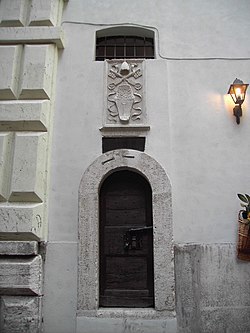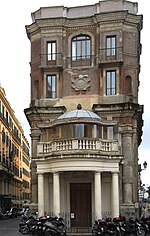Galleria Comunale d'Arte Moderna, Rome
Art museums and galleries in RomeCarmelite monasteries in ItalyContemporary art galleries in ItalyEngvarB from May 2013Modern art museums in Italy ... and 2 more
Museums in RomeUse list-defined references from May 2013

The Galleria Comunale d'Arte Moderna is the museum of modern and contemporary art of the city of Rome, Italy. It is housed in a former Barefoot Carmelite monastery dating from the 17th century and adjacent to the church of San Giuseppe a Capo le Case, at 24 Via Francesco Crispi.
Excerpt from the Wikipedia article Galleria Comunale d'Arte Moderna, Rome (License: CC BY-SA 3.0, Authors, Images).Galleria Comunale d'Arte Moderna, Rome
Via Francesco Crispi, Rome Municipio Roma I
Geographical coordinates (GPS) Address Website External links Nearby Places Show on map
Geographical coordinates (GPS)
| Latitude | Longitude |
|---|---|
| N 41.904 ° | E 12.4858 ° |
Address
Galleria d'Arte Moderna
Via Francesco Crispi 24
00187 Rome, Municipio Roma I
Lazio, Italy
Open on Google Maps











